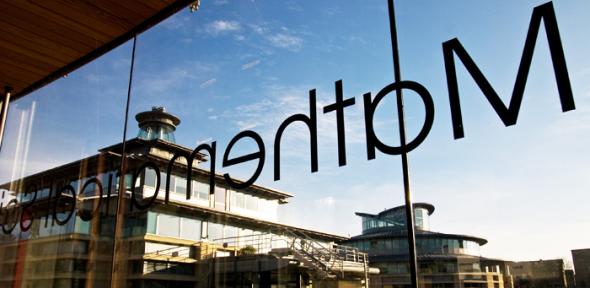
The ground-breaking new Institute of Computing for Climate Science (ICCS) is taking the Faculty's role in tackling climate change into a new era.
The ICCS's purpose is to develop robust, efficient and sustainable computing tools and techniques for climate scientists, making use of the latest advances in data science (especially in artificial intelligence and machine learning) and computer science. The Institute has been established with support from Schmidt Futures, a philanthropic initiative of Eric and Wendy Schmidt that bets early on exceptional people making the world better.
"Cambridge is uniquely placed to host the ICCS. We have cutting edge expertise in climate science, in data science, and one of the greatest computer science departments in the world." Colm-cille Caulfield
"Cambridge is uniquely placed to host the ICCS. We have cutting edge expertise in climate science, in data science, and one of the greatest computer science departments in the world," says Colm-cille Caulfield, Head of the Department of Applied Mathematics and Theoretical Physics (DAMTP) and Co-Director for Science of the ICCS. "Because of the collegial and boundary-busting culture at Cambridge, we were naturally able to bring together the multidisciplinary team to do this."
The ICCS is hosted at DAMTP as a collaboration with the University's climate change initiative Cambridge Zero, the Department of Computer Science and Technology (CST), and University Information Services (UIS). Leading the interdisciplinary team as Academic Director is the renowned climate scientist and Head of Cambridge Zero, Emily Shuckburgh.
Internationally, the ICCS will form the scientific software "Core" of the Virtual Earth System Research Institute and be part of the global Virtual Institute of Scientific Software network, both also supported by Schmidt Futures.
Climate and computing
Modern climate science has always presented a profound computational challenge. The central governing equations are so difficult to solve they need fast computers to produce accurate approximate solutions. What's more, the Earth's climate is an exceedingly complex system coupling components across a vast range of scales. For example, a warming of a patch of sea surface in the middle of the Atlantic can cause a hurricane on US coasts a few weeks later — that's the famous butterfly effect.
"There is a hierarchy of mathematical models describing the features of our climate," explains Caulfield. "For example, researchers working on polar ice look at anything from the microphysics of ice up to the interaction of the North pole ice cap with the sea around it." Implementing this hierarchy computationally, making sure all components have access to the necessary data and interact optimally, presents a considerable technical challenge.
Big Data pushes the boundaries still further. Every day billions of data points are relayed by satellites, ocean floats, and other networks of sensors dotted across the globe. No army of humans could ever analyse all this data, but modern artificial intelligence approaches (in particular deep learning) have the potential to exploit this largely untapped resource to inform and significantly improve traditional climate models.
"The idea is to build the next generation of models by combining modern data science and artificial intelligence with more traditional physical insights," says Caulfield. "But there's a major software challenge of how to combine the best way of doing artificial intelligence with the best way of doing climate science."
Bridges and bicycles
Traditionally, most climate scientists have been producing their software themselves, without help from computing experts. This has worked well, but as Caulfield points out, is a bit like asking road race cyclists to build the bridge they need to cross a stream: they'll build something that serves their purpose, but whether that bridge will last, or even be usable by other vehicles, is another question.
"Just like civil engineering can build bridges that last for decades, the challenge is to write software that is reliable, sustainable, and can be used by other people without barriers," says Caulfield. "That's part of the vision of Schmidt Futures: the key is to not only support the actual science, but also provide knowledge and approaches from high-quality software engineering."
Busting boundaries
The ICCS is a result of this vision. Over an initial period of five years the ICCS will employ an engineering lead and six other research software engineers, four postdoctoral researchers, and an administration team running the Institute out of DAMTP, with an Executive Programme Director to lead operationally. Strategic and academic leadership of the Institute will build on Cambridge's existing expertise: alongside Shuckburgh as Academic Director and Caulfield as Co-Director for Science, the team will be led by Co-Director for Engineering Chris Edsall from UIS, and Co-Director for Computer Science and Software Engineering Dominic Orchard from CST.
The Institute will not only produce software, but also address fundamental theoretical challenges — such as developing deep learning algorithms that can cope with sensitive chaotic processes that play out on many scales, ruled by the butterfly effect. ICCS will add further to DAMTP's world-class activity in data science. For example, DAMTP already hosts the Cambridge Centre for Data-Discovery an Interdisciplinary Research Centre of the University, with Aviva as a founding partner, and the Cambridge Centre for AI in Medicine supported by GSK and AstraZeneca.
ICCS software engineers will be expected to engage with, and be motivated by, the climate problem, learning data science and deep learning aspects of the research, as well as the physics of the climate system. "They are not just people who 'fix' code, but rather they play essential and deeply valuable roles in any research effort," says Caulfield. "Similarly, ICCS scientists will have to understand that it's absolutely essential that software be sustainable, accessible, and reproducible. There's a component of teaching people how to 'build bridges properly' at all levels."
All software produced by ICCS researchers will be open source so that scientists around the world can verify and use it. "This is the next step of open science, in addition to open access papers and open access data," says Caulfield. "It's about having open access, reproducible, and sustainable code that somebody else can use. It's code that comes with a legacy."
International networks
The ICCS will form part of bigger international networks. Last year, Schmidt Futures set up the Virtual Earth System Research Institute which currently consists of four research groups addressing some of the largest challenges in climate science. "Our role will be to support, guide and enable these other four teams. The vision is that we are the hub of software engineering, data science development, and climate science translation for all the four teams," says Caulfield.
In addition, the ICCS is part of the the inter-disciplinary Virtual Institute of Scientific Software, also supported by Schmidt Futures. While the Cambridge component focusses on climate science, three further centres, based at Georgia Institute of Technology, the Johns Hopkins University, and the University of Washington, will address areas including astrophysics, the life sciences, and engineering.
In all cases the aim is to exploit the power of software, which already drives so many aspects of our lives, to tackle the biggest scientific questions facing us and our planet.
To find out more about climate modelling, listen to this Plus podcast, featuring Emily Shuckburgh, or read this Plus article. To find out more about artificial intelligence and machine learning, read this Plus article.

